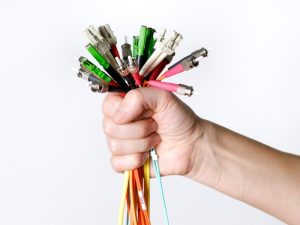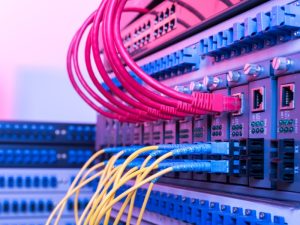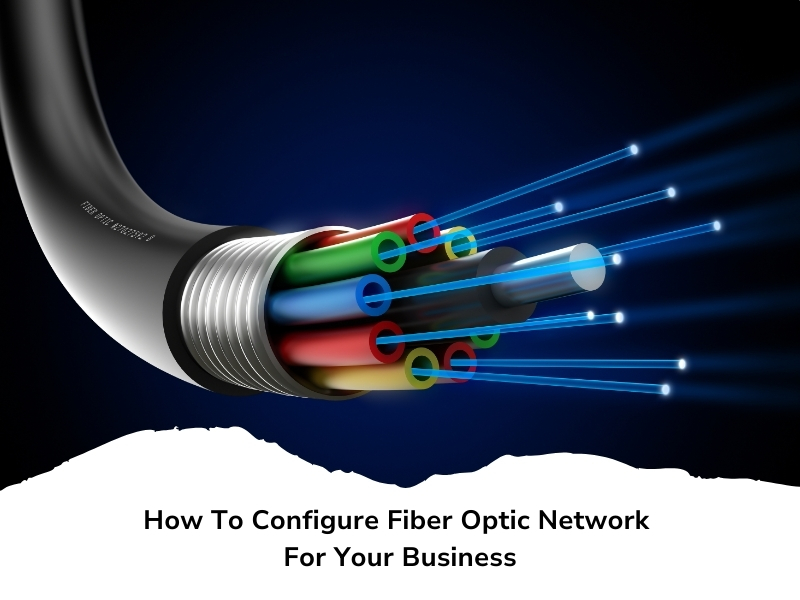In today’s fast-paced business environment, a reliable and high-speed internet connection is crucial. Fiber optic networks offer the speed and bandwidth that businesses need to stay competitive. If you’re looking to configure a fiber optic network, you’ve come to the right place. This guide will help you set up a fiber optic network tailored to your business’s needs.
How can you determine your business’s fiber optic needs?
Before diving into the technical aspects, it’s essential to understand your business’s requirements. Here are some factors to consider:
- Number of users: Determine how many employees will use the network. More users typically require more bandwidth.
- Types of applications: Identify the applications you run. Video conferencing and large file transfers need higher speeds.
- Future growth: Consider your business’s growth. Choose a solution that can scale as your needs increase.
- Location: Evaluate the physical layout of your office. Distance can affect speed and connection quality.
- Budget: Understand your budget constraints. Fiber optic solutions can vary widely in cost.
What equipment do you need to configure fiber optic network?
Once you’ve assessed your needs, it’s time to gather the necessary equipment. Here’s what you’ll typically need:
- Fiber optic cables: Choose between single-mode and multi-mode cables based on distance and bandwidth requirements.
- Transceivers: These devices convert electrical signals to optical signals and vice versa.
- Switches: Managed switches allow you to control and manage network traffic efficiently.
- Patch panels: This helps organize and manage fiber optic cables neatly.
- Optical Network Terminal (ONT): This device connects your network to the internet service provider.
How do you plan the layout for your fiber optic network?
Planning a well-defined fiber optic network topology is crucial for a successful installation. Here’s how to approach the layout:

- Identify locations: Mark where you’ll place network devices like switches and routers.
- Cable pathways: To protect fiber optic cables from damage, carefully plan the route, considering factors like distance, accessibility, and potential hazards.
- Distance calculations: Ensure cable runs do not exceed the maximum length for optimal performance.
- Access points: Identify where you’ll need access points for Wi-Fi coverage.
- Future expansion: Leave room for additional connections as your business grows.
What are the steps to install fiber optic cables?
Installing fiber optic cables requires care and precision. Follow these steps:
- Prepare the site: Clear the area where cables will be installed.
- Measure and cut cables: Measure the distance accurately and cut cables to the required lengths.
- Run the cables: Carefully run the cables through the planned pathways.
- Secure the cables: Use cable ties and conduits to secure the cables and prevent damage.
- Label the cables: Label both ends of each cable for easy identification during troubleshooting.
How can you ensure proper termination of fiber optic cables?
Termination is a critical step in configuring your network. Here’s how to do it right:
- Use the right tools: Invest in a quality fiber optic termination kit.
- Strip the fiber: Carefully strip the outer coating of the fiber without damaging the glass core.
- Clean the fibers: Use isopropyl alcohol and lint-free wipes to clean the fibers.
- Attach connectors: Securely attach the connectors according to the manufacturer’s instructions.
- Test the connections: Use a testing device to ensure the terminations function correctly.
What techniques can you use to test your fiber optic network?
After installation, testing is crucial to ensure everything works. Here are some effective techniques:
- Visual Inspection: Check for any visible damage or misalignment in connectors.
- Optical Time Domain Reflectometer (OTDR): This tool helps identify faults and measure cable lengths.
- Power Meter and Light Source: Use these to measure the signal strength in your network.
- Link Loss Testing: Measure the loss of signal strength over distances to ensure optimal performance.
- Bit Error Rate Testing: This test helps determine the network’s reliability.
How do you configure fiber optic network devices for optimal performance?
Configuration is essential to get the most out of your network. Follow these guidelines:
- Update firmware: Ensure all devices have the latest firmware updates.
- Set Up VLANs: Use Virtual Local Area Networks to manage traffic effectively.
- Quality of Service (QoS): Configure QoS settings to prioritize bandwidth for critical applications.
- Monitor traffic: Use network monitoring tools to monitor performance and usage.
- Secure your network: Implement security protocols to protect sensitive data.

What maintenance practices should you follow for your fiber optic network?
Regular maintenance keeps your network running smoothly. Here are some best practices:
- Routine inspections: Schedule regular inspections to identify potential issues.
- Keep cables clean: Use proper cleaning tools to maintain cable cleanliness.
- Monitor performance: Continuously monitor network performance and traffic loads.
- Document changes: Keep records of any changes made to the network for future reference.
- Train staff: Ensure your team is trained to recognize and address fundamental issues.
When should you consider upgrading your fiber optic network?
Upgrading your network is sometimes necessary to keep up with demands. Consider these indicators:
- Increased demand: If your bandwidth is consistently maxed out, it may be time for an upgrade.
- New technologies: Stay informed about emerging technologies that may benefit your business.
- Outdated equipment: If your hardware is old and failing, it might be time for a replacement.
- Expansion plans: Consider upgrades if you’re planning to expand your workforce or services.
- Performance issues: Frequent slowdowns or connectivity issues warrant an evaluation of your network.
Conclusion
Configuring a fiber optic network for your business can seem daunting, but breaking it down into manageable steps makes the process easier. By understanding your needs, gathering the right equipment, planning your layout, and following best practices, you can successfully set up a fiber optic network that supports your business goals.
Get expert help with Yakka Technical Services!
Ready to take your business’s connectivity to the next level? Yakka Technical Services offers cutting-edge solutions for Fiber Optic Networks & Transmission in Dubai. Our team is dedicated to helping you configure your fiber optic network efficiently and effectively. Contact Yakk Technical Services today for a consultation!


